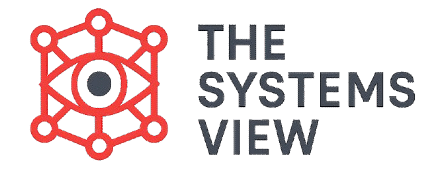We have already learned that complex systems are messy. They have many interconnected parts, nonlinear effects, and time delays. Now, let’s look at the two sides of complexity: what makes these systems strong and what makes them weak.
Understanding both the power and the pitfalls of a complex system is vital for a Systems Thinker. It explains why some things are almost impossible to change, while others recover quickly from a shock.
1. The Hidden Power (Strengths)
Complex systems are not just messy; they are often built for survival. Their complexity gives them several important strengths.
Resilience and Shock Absorption
Resilience is the ability of a system to bounce back after a difficult event. Because complex systems have many parts and loops, they can often absorb a shock without collapsing.
For example, if a large power grid loses one or two power plants, the electricity does not just shut down everywhere. The interconnected loops and backup systems in the grid instantly move power from other sources. A simple system would fail completely, but a complex system has built-in ways to handle and absorb stress.
Self-Stabilization (Homeostasis)
Complex systems are programmed to maintain a familiar state. This is called self-stabilization or homeostasis. The balancing feedback loops constantly work to bring the system back to where it was.
Your body is the best example. If you get too hot, your body starts sweating (a balancing loop) to cool you down and keep your temperature stable. This is a strength because it keeps the system alive and functioning despite continuous outside changes.
Redundancy and Reliability
Because a complex system has many interconnected parts, it often has redundancy. This means that if one part fails, another part can quickly take over its job.
In a large computer network, if one server goes down, another server in the network instantly starts handling that work. This makes the overall system more reliable. A complex system uses this built-in backup to keep functioning even when a crisis occurs.
2. The Hidden Weakness (Pitfalls)
The very same complexity that makes a system resilient can also make it difficult to manage and nearly impossible to fix.
Deep Resistance to Change
The self-stabilization that is a strength can quickly become a weakness. Complex systems have a deep resistance to change. If you try to push the system in a new direction, the same balancing loops that keep it stable will push back.
This is often why company cultures are so hard to change. A new CEO might try to change the rules, but the company’s traditions, informal social rules, and unwritten beliefs (the mental models) will pull the company back to its old ways. The system fights against the fix.
Causes are Distant in Time and Space
One of the greatest weaknesses is that the cause of a problem is often very far from the effect. The cause and the effect are separated by both time and space.
You might see a problem (a major fire in a warehouse) today, but the cause (a poor maintenance schedule or budget cut) happened months or years ago and miles away in a corporate office. Because the problems are distant, people often treat the symptom they see today and fail to find the real, distant cause.
Important: The greatest challenge in working with complex systems is that the structure that provides resilience also creates resistance. High-leverage change means finding a way to work with the system’s energy, not against its stabilizing forces.
Time Delays Hide the Truth
The system’s behavior is hidden by time delays. You might take an action today that you think is a great idea. However, the true result of that action—whether it was a success or a failure—might not show up for months.
For example, a marketing campaign might look successful in the short term because sales went up. But because of a three-month delay in the system, you later realize that most of the new customers quickly cancelled. You celebrated the short-term rise but missed the long-term failure because of the delay.
Leverage Points are Not Obvious
In a complex system, the best place to intervene—the leverage point—is almost never the place where the problem is most obvious. Because of all the resistance and delays, you must look for a small point of influence far away from the symptom. This makes finding the solution very difficult because it goes against our natural instinct to fix the biggest, loudest problem.
Conclusion
Complex systems are a double-edged sword. Their strengths, like resilience and self-stabilization, allow them to survive shocks and stay functional. However, these same strengths create powerful resistance to change and hide the true causes of problems behind time delays. A Systems Thinker understands this dual nature. By accepting that the system will fight your changes, you can start looking for the distant, high-leverage points that will make your efforts successful.



